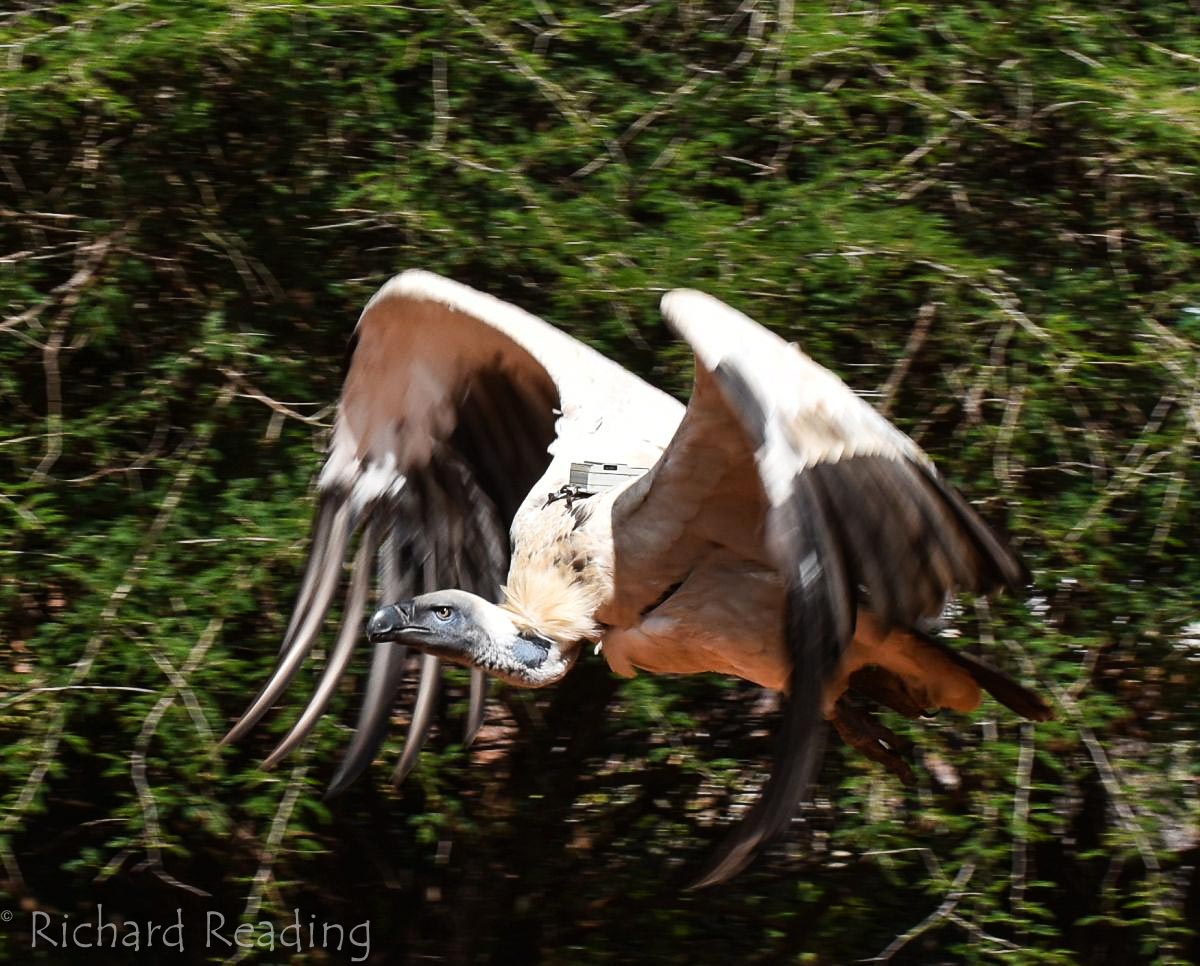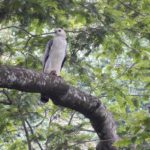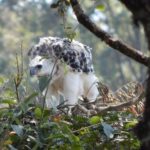Interview with Richard Reading about raptors in Botswana
In this interview Richard Reading talks about raptor conservation Botswana
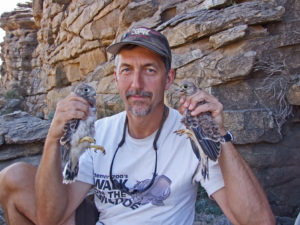
What projects are you working on in Botswana?
I work with a non-governmental organization called Raptors Botswana that currently focuses on vulture conservation throughout Botswana and really all of southern Africa. Our work has targeted the 5 most common species that occur in Botswana: Cape, Lappet-faced, White-headed, White-backed, and Hooded Vultures. Our team consists of Pete Hancock, Dr. Glyn Maude, Dr. Moses Selebatso, me, and our graduate students Beckie Garbett (working on her Ph.D. at the University of Cape Town, UCT), Leungo Leepile (working on his Master’s at UCT), and Tsaone Goikantswemang (working on her Master’s at the University of Botswana). Our collective work has focused on nesting ecology, population dynamics, movement patterns, and sources of mortality.
What is the overall trend for raptors in Botswana?
Beckie conducted roadside counts of raptors that replicated work conducted in the 1990s by a couple of researchers, the Herremans, and has found a disturbing trend of declines in the vast majority of species. Very few species showed increases.
Are raptors doing better in protected areas?
We are just beginning to try to answer this question by collecting data and comparing inside and outside of protected areas. Beckie’s roadside surveys didn’t show large differences inside and outside of protected areas, but we need a lot more data to address this question well.
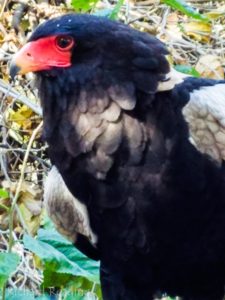
What is the status of the Martial and African Black Eagle?
We are not certain, but believe that both species are declining. We really need more data on all raptor species in Botswana, but especially the large eagles.
How are the other eagles doing?
Again, we are not certain, but Beckie’s road survey work found that most species of raptors were declining, although most of the trends were not significant due to low statistical power of the analyses. More work is clearly warranted and needed.
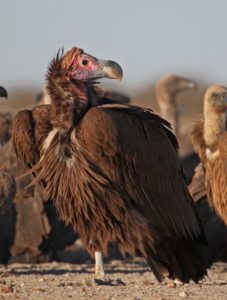
How are vultures doing?
We fear, and the data we’ve collected thus far suggests, that vultures continue to decline especially due to targeted and non-targeted poisoning (including lead poisoning from spent ammunition). In Botswana, we continue to find large numbers of vultures on carcasses poisoned by farmers who are targeting large carnivores that kill their livestock. We have initiated an education and outreach program to address some of these issues and problems. Targeted poisoning by poachers who dislike the sentinel value of vultures to law enforcement officials falls largely outside of the realm of issues we can effectively address, although the Botswana Defense Force and its special forces are actively engaged in anti-poaching activities.
What are the most threatened raptors in Botswana?
Given the lack of data we have on most species this is a difficult question to answer. That said, we do know that vultures are declining at significant rates, so likely they are the most threatened species in the country. Based simply on the numbers of dead White-backed Vultures that we know about (and undoubtedly, there are poisonings that we do not find), that species is probably declining the fastest of the raptors in Botswana. Based on absolute numbers of breeding pairs or birds, White-headed or Lappet-faced Vultures may be the most threatened species in the country. We obviously require a lot more data, something we hope to pursue.
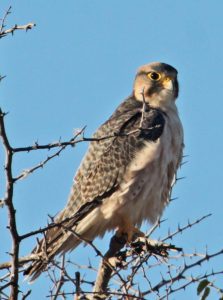
Are there any species increasing in numbers?
Only the snake eagles and Tawny Eagles appear to be increasing in Botswana.
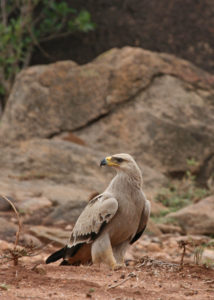
How important is Botswana for migrating raptors from Eurasia and other parts of Africa?
Several species of raptors migrate from Eurasia through Botswana and some winter here, including Wahlberg’s Eagles, Steppe Eagles, Lesser Kestrels, and far more. Given the lack of development throughout most of the country and relatively good habitat, Botswana likely represents a vitally important country for migrating raptors, even including those species that simply pass through on their way to South Africa.
Does poisoning of predators like Lions or Leopards affect raptors?
Most definitely. When any large carnivore (including also hyenas, African wild dogs, and cheetahs) kills livestock, the farmers often lace the carcasses with cheap, easily procured rodenticides that will also kill raptors, especially vultures.
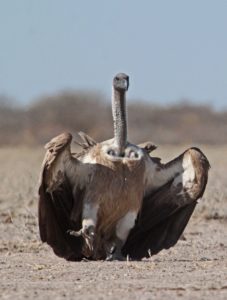
What is the attitude of people towards raptors?
Our work suggests that most people value vultures (we hope to study this more formally in the future), especially the more they learn about their activities that help rid the environment of carcasses and stop the spread of diseases. People largely do not want to kill raptors in Botswana and do so accidentally, so we are focusing substantial outreach efforts on the unintentional poisoning. We also hope to begin an anti-lead ammunition campaign, as I think most people will be open to the idea.
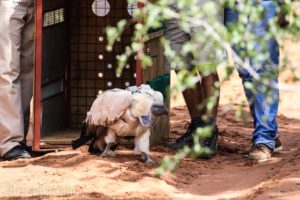
What needs to be done to secure a future for raptors?
We have a lot of work to do! I have already mentioned the vital need for us to address the targeted and non-targeted poisoning of raptors, including the impact of lead ammunition. Collisions with power lines represent another significant threat to large raptors. We are working the Endangered Wildlife Trust (EWT) out of South Africa to assess and address the situation (preliminary evaluations suggest that most of the power lines in Botswana pose a potentially lethal threat to large raptors). EWT has enjoyed significant progress mitigating the threat of power lines by working with the energy companies, as collisions also cost them a lot of money. Other threats include land conversion to agriculture, the potential impact of too much nature-based tourism, and global climate change. All of these threats require careful consideration and mitigation.
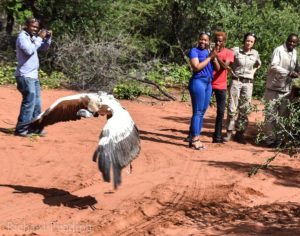
Photo by Richard Reading
What future priorities do you see for raptor research in Botswana?
Arguably, the greatest priority for Botswana is developing local capacity. There are no local people trained as raptor ecologists, although we have some students and so hope to change this situation in the near future. We require a dedicated team of conservationists that understand the ecology of raptors and what management actions would most benefit them
As for particular species of raptors, population and nesting ecology of large eagles, especially Batleurs, Martial Eagles, and Secretary Birds, require immediate research and conservation attention. Raptors Botswana would love to begin work targeting these species, but we would require significantly more resources that we currently enjoy.
We are working on several key threats to raptors in Botswana, including power lines, lead ammunition, and poisoning, but we have a lot more work to do in each of these areas.
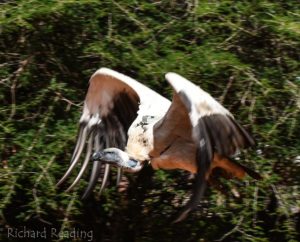
What tips do you have for researchers and conservationists (both professional or as a volunteer) interested in working in raptor conservation in Botswana?
The Botswana government recently came out with new, draft rules regulating research in the country. Those rules will make it quite difficult for non-Botswanan citizens to conduct research in the country and will increase the costs of doing so substantially.
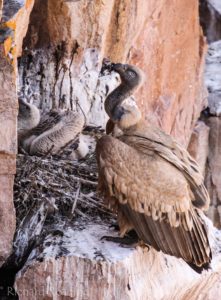
What was your most amazing experience with raptors?
Several experiences stand out in my mind when it comes to memories of raptors, from watching a female Harpy Eagle defend a monkey carcass from a male Harpy (probably her mate) that she was feeding her chick to a warbler dying in the talons of a Japanese Sparrowhawk just centimeters from my head! I remember one time at the nest of a Cinereous Vulture in Mongolia watching 2 other species of birds, Eurasian Tree Sparrows and Isabelline Shrikes nesting within the same nest of the vulture. I was so engrossed with watching these birds, that I downplayed the threat facing my wife who had climbed into the nest to help us capture and put a telemetry unit on nestling that was close to fledging. At the time, she was being buzzed by one of the adult birds (a very rare occurrence with Cinereous Vultures) and here I was examining these other nests at the bottom of the huge vulture nest, seemingly (OK, not just seemingly) ignoring her pleas for help! Luckily, the vulture never came that close to her and we got the chick tagged and equipped with its telemetry unit.

